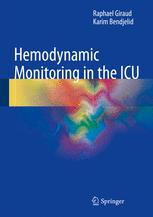

Most ebook files are in PDF format, so you can easily read them using various software such as Foxit Reader or directly on the Google Chrome browser.
Some ebook files are released by publishers in other formats such as .awz, .mobi, .epub, .fb2, etc. You may need to install specific software to read these formats on mobile/PC, such as Calibre.
Please read the tutorial at this link: https://ebookbell.com/faq
We offer FREE conversion to the popular formats you request; however, this may take some time. Therefore, right after payment, please email us, and we will try to provide the service as quickly as possible.
For some exceptional file formats or broken links (if any), please refrain from opening any disputes. Instead, email us first, and we will try to assist within a maximum of 6 hours.
EbookBell Team

5.0
98 reviewsThis book describes the pathophysiological significance of the hemodynamic monitoring parameters available to the clinician and their role in providing reliable and reproducible information on the cardiocirculatory status of a patient in shock. It is explained how measurements of these parameters enable the intensivist to understand the patient’s condition and to make more informed treatment decisions in order to optimize the hemodynamic status and improve the prognosis. Full guidance is provided on measurement of intravascular blood pressures, cardiac output, and derived variables. Methods of cardiac output determination based on the classical pulmonary thermodilution, transpulmonary thermodilution, echocardiography, and Doppler techniques are reviewed. Techniques based on calibrated and non-calibrated pulse contour analysis are discussed, with attention to their limitations. Furthermore, the dynamic indices of fluid responsiveness, their clinical applications, and issues related to their use are addressed. Care is also taken to explain the physiological concepts underlying various devices used by anesthesiologists and intensivists.